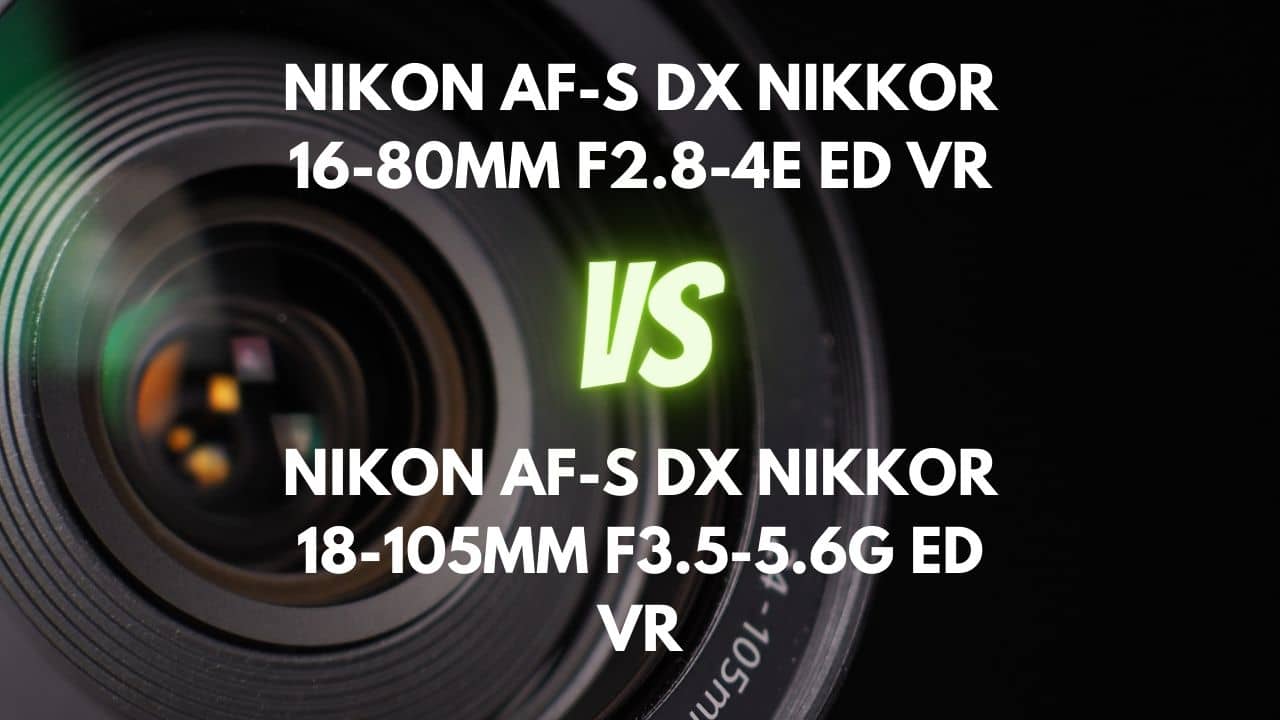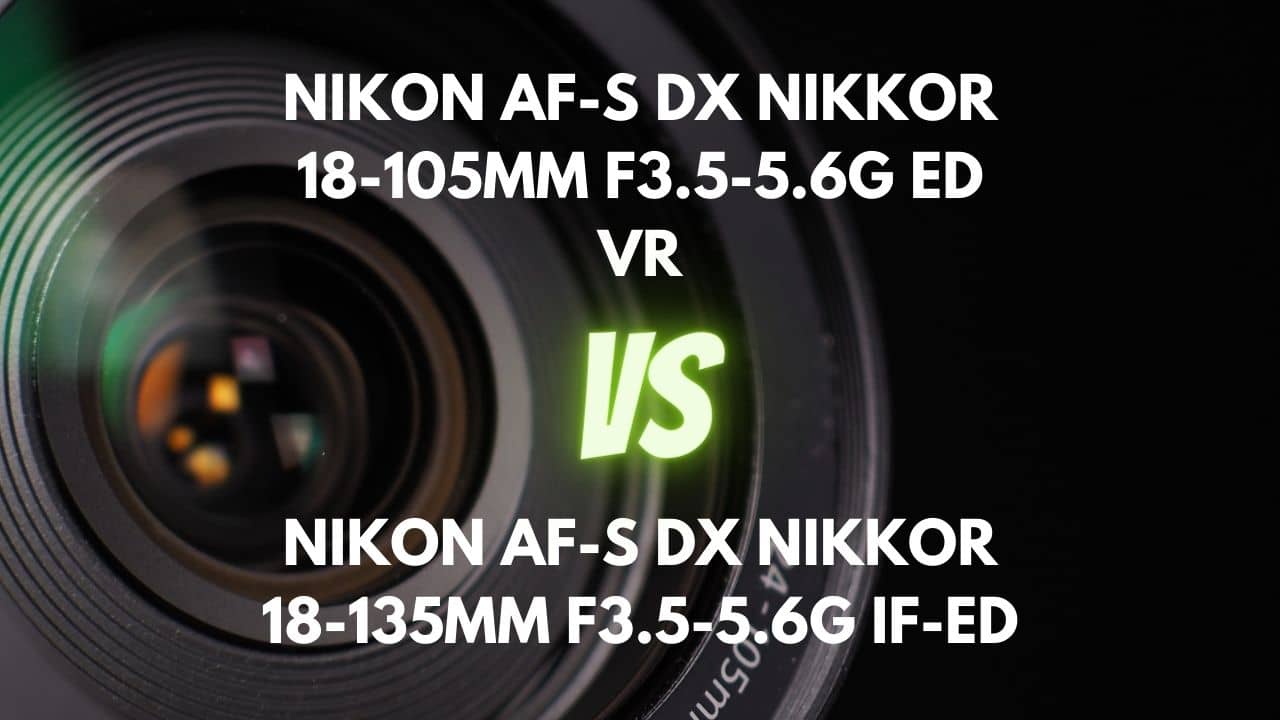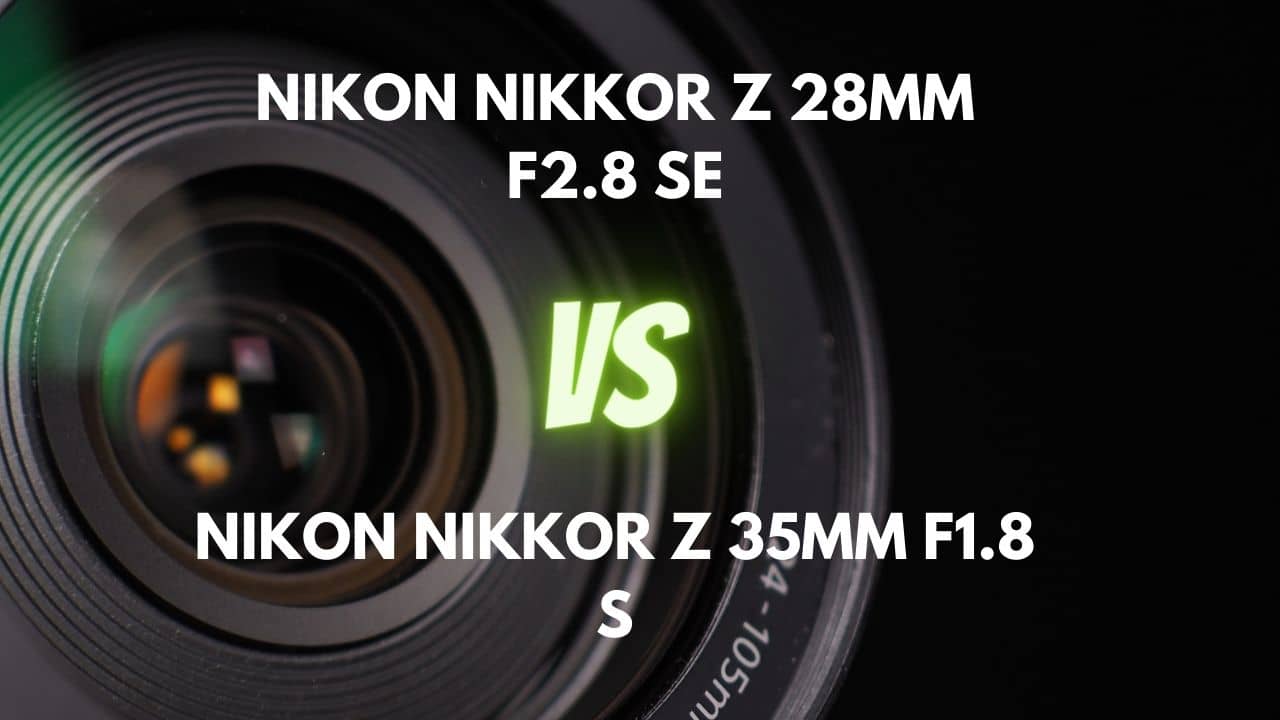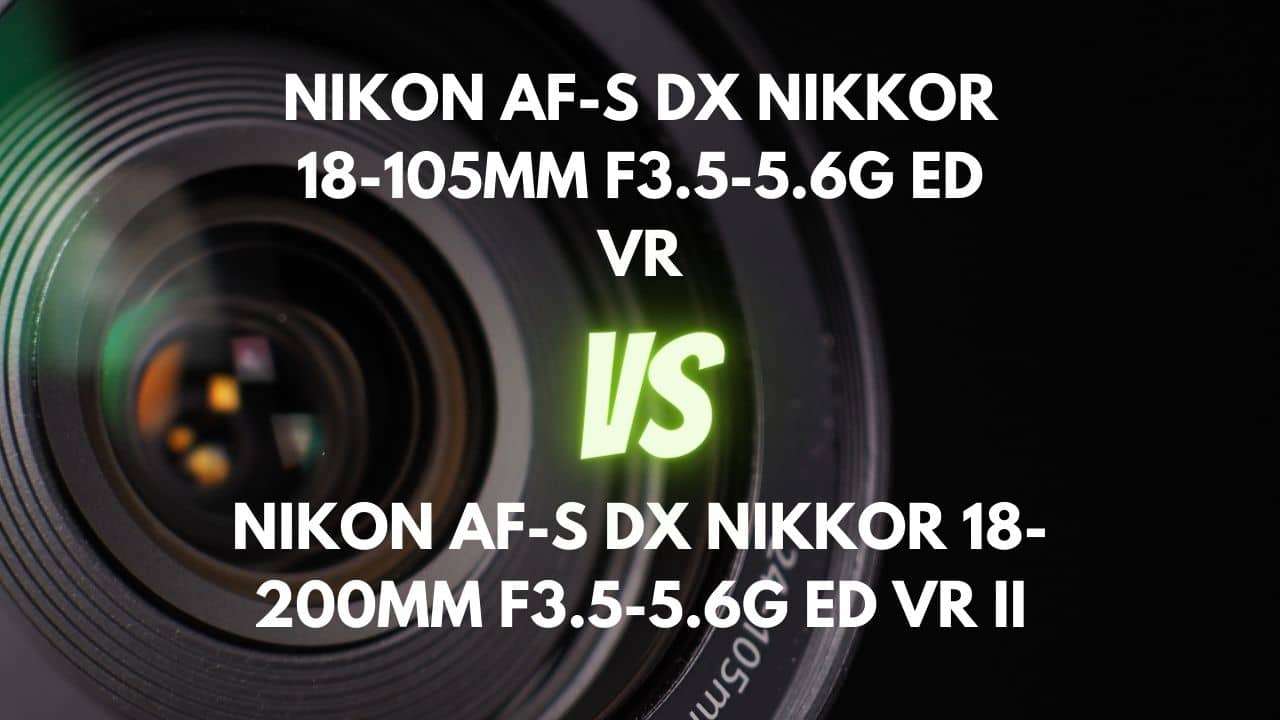Are you on the hunt for the perfect portrait lens that not only captures the essence of your subject but also adds a touch of artistic flair? Look no further! In this article, we dive deep into the world of the Nikon AF DC-NIKKOR 105mm F2D and Nikon AF DC-NIKKOR 135mm F2D, two exceptional portrait lenses that boast a unique “Defocus Control” (DC) feature.
This innovative technology allows you to fine-tune the spherical aberration in the out-of-focus areas of your image, producing captivating, natural-looking bokeh effects that elevate your photography to new heights.
Join us as we compare and contrast these two remarkable lenses, exploring their strengths and weaknesses, and ultimately help you decide which masterpiece creator is the right choice for your photography arsenal.
So, get ready to immerse yourself in the enchanting realm of defocus control, where the pursuit of the perfect portrait becomes an exciting adventure!
Overview
| Nikon AF DC-NIKKOR 105mm F2D | Nikon AF DC-NIKKOR 135mm F2D | |
|---|---|---|
| Max Aperture | F2.0 | F2.0 |
| Aperture Type | Fixed | Fixed |
| Focal Range (mm) | 105 | 135 |
| Max Format | 35mm FF | 35mm FF |
| Zoom Ratio (X) | 1 | 1 |
Comparing the Nikon DC 105mm F2D and the Nikon DC 135mm F2D, both lenses have a maximum aperture of f/2.0, which allows for good low light performance, shallower depth of field, and overall better image quality. The fixed aperture in both lenses ensures consistent performance throughout their respective focal lengths. Their focal ranges, however, differ with the 105mm being slightly shorter than the 135mm. This difference in focal length will impact the field of view and subject isolation capabilities.
The 105mm F2D is a versatile lens that offers a balance between subject isolation and portability. Its shorter focal length allows for a wider field of view, making it suitable for portrait, landscape, and architectural photography. This lens might be more appealing for photographers who require flexibility in various shooting scenarios.
On the other hand, the 135mm F2D has a longer focal length, which enhances subject isolation and background blur, making it ideal for sports, wildlife, and portrait photography. This lens will perform better in situations where a longer reach is essential. However, its increased focal length may result in a larger, heavier lens, which could impact portability.
In conclusion, both lenses offer excellent performance and image quality, but the choice between them ultimately depends on your specific needs and preferences. If you require a more versatile lens with a wider field of view, the 105mm F2D is a fantastic choice. If you need a lens with better subject isolation and a longer reach for sports, wildlife, or portraiture, the 135mm F2D would be the superior option.
Design and Ease of Use
| Nikon AF DC-NIKKOR 105mm F2D | Nikon AF DC-NIKKOR 135mm F2D | |
|---|---|---|
| Diameter x Length (mm) | ⌀79×111mm | ⌀79×120mm |
| Weight (gr) | 640 | 815 |
| Filter Thread (mm) | 72 | 72 |
| Weather Sealing | No | No |
| Distance Scale | Yes | Yes |
| DoF Scale | Yes | Yes |
| Hood Supplied | Yes | Yes |
| Tripod Collar | No | No |
Comparing the Nikon DC 105mm F2D and the Nikon DC 135mm F2D based on their dimensions and weight, the 105mm F2D lens is smaller and lighter, measuring ⌀79×111mm and weighing 640 grams. In contrast, the 135mm F2D lens is slightly larger and heavier, measuring ⌀79×120mm and weighing 815 grams.
The smaller size and lighter weight of the 105mm F2D lens offer advantages in portability, balance, storage, and lens swapping. It is easier to carry around, especially when traveling or walking around for extended periods, and takes up less space in your camera bag. The lighter weight also makes it more comfortable to handle and easier to swap lenses quickly.
On the other hand, the 135mm F2D lens, being slightly larger and heavier, may impact the overall balance of your camera setup and make it more front-heavy. This could lead to discomfort or difficulty in handling the camera, especially during longer shoots.
Lens Mount and Barrel
The Nikon AF DC 105mm F2D and 135mm F2D lenses both have lens mounts made of chromed brass, a durable metal that ensures a solid connection to the camera body. Neither lens mount features a rubber gasket for weather sealing.
Regarding the lens barrel, the 105mm F2D lens is primarily constructed of metal, with some plastic elements, and has a crinkle-coat black finish. Its excellent build quality ensures durability, and the Rear Focusing design means that the physical size of the lens remains constant during zooming or focusing. The 135mm F2D lens features a combination of metal and plastic parts with Nikon’s “pro style” crinkle finish, making it sturdy and durable as well. Like the 105mm F2D, the length of the 135mm F2D lens remains constant regardless of the focus setting.
The choice between plastic and metal lens barrels depends on your priorities as a photographer. Plastic barrels are generally lighter and more affordable, while metal barrels are often more durable and offer a more premium, professional feel. Both the Nikon 105mm F2D and 135mm F2D lenses strike a balance between weight, durability, and cost by using a combination of plastic and metal materials.
Weather Sealing
When comparing the weather sealing of the Nikon AF DC-NIKKOR 105mm F2D and the Nikon AF DC-NIKKOR 135mm F2D, both lenses share the same lack of weather protection. The 105mm F2D is not weather-sealed and lacks a gasket at the lens mount, while there are no internal seals at the rings, switches, and the front of the barrel. Similarly, the 135mm F2D does not offer weather sealing and is missing a rubber gasket at the lens mount.
Weather sealing is a useful feature for lenses as it helps prevent dust, moisture, and light water splashes from entering the lens, ensuring durability and performance in various weather conditions. However, it is not essential for portrait lenses, especially if the majority of your photography takes place in controlled environments such as studios or indoors.
Considering the information provided, neither lens has a superior weather sealing, as both lack this feature. If you frequently shoot outdoor portraits or in unpredictable weather conditions, it’s essential to be cautious with these lenses and take additional measures to protect them from environmental elements. However, if your portrait photography primarily occurs indoors or in controlled settings, the absence of weather sealing should not be a major concern.
Rings
When comparing the rings of the Nikon DC 105mm F2D and the Nikon DC 135mm F2D, both lenses have 3 rings: the focus ring, the aperture control ring, and the defocus control ring. The 105mm F2D’s rings have a well-designed, tactile feel with a checkerboard texture on the focus ring for added grip. Its defocus control ring features a blocking button that needs to be pressed before rotating. The focus ring is smooth and accurate, while the aperture control ring clicks with each aperture value. Additionally, there is a windowed distance scale and a depth-of-field indicator marked only at f/16, along with an infrared index.
On the other hand, the 135mm F2D’s rings are also well-designed, with the focus ring and aperture ring in traditional positions and the Defocus Control ring closer to the filter thread. The focus ring is stiff but tactile, and there is a windowed distance scale and depth-of-field indicator. The Defocus Control ring is a bit complicated to understand but easy to operate once you’re familiar with it. However, this lens lacks an automatic manual focus override, requiring the user to turn a ring on the camera to disengage the Auto Focus before making manual adjustments.
Switches/Buttons
The Nikon DC 105mm F2D and Nikon DC 135mm F2D lenses have similar switches/buttons designs. Both lenses feature an AF/MF switch with an unlocking button on the side, requiring it to be pressed to rotate the AF Mode selector between M or A. The aperture ring on both lenses has a lock to secure the aperture at f/16, along with a sliding lock to keep it set. To use manual focus, the lens-based switch on each lens must be set to manual, and the focus ring rotates approximately 100 degrees in manual focus mode. Additionally, both lenses have a tag for working with the infrared spectrum.
Upon further examination, both lenses share the same design for their switches/buttons, providing users with a consistent experience across the two models.
Filter Thread
The Nikon DC 105mm F2D and Nikon DC 135mm F2D lenses both feature a 72mm filter thread size. In both lenses, the front element does not rotate during focus, thanks to their RF (Rear Focusing) design, which makes them easy to use with filters. The 105mm F2D has a metal filter thread that doesn’t vignette even with stacked thick filters, while the front element of the lens is recessed 1 1/2 inches from the end of the lens shell. Additionally, the integrated metal lens hood extends a further 1 1/2 inches beyond that, providing excellent protection against stray light without interfering with filter installation.
Upon comparing the two lenses, it’s clear that they share the same filter thread size and design. Both lenses provide ease of use with filters, thanks to their non-rotating front elements and 72mm filter thread size.
Lens Hood
Both the Nikon DC 105mm F2D and Nikon DC 135mm F2D lenses feature built-in metal lens hoods, providing added protection against stray light, which helps to reduce lens flare and maintain image contrast.
The 105mm F2D lens hood is integrated and lined with a black velour material. It can be smoothly rotated and fixed in an active position, extending 1 1/2 inches beyond the front element. The hood is designed with fine baffles to further prevent stray light from entering the lens. However, it may not be completely effective in all situations, especially when the sun is off-axis to the lens.
On the other hand, the 135mm F2D lens hood has a sliding, telescope-style design, which is unique and reminiscent of older lenses. However, it is relatively short, making it difficult to attach/remove the lens cap when extended. Additionally, it can be prone to sticking if not pushed back in properly.
While both lenses have the same built-in lens hood design, the 105mm F2D has an edge due to its more effective light-blocking capabilities, thanks to the fine baffles and black velour lining. However, the 135mm F2D’s telescope-style hood design adds a touch of nostalgia and charm, despite its shortcomings. In terms of functionality and effectiveness, the lens hood on the Nikon DC 105mm F2D is superior.
Focusing and Optical Stabilization
| Nikon AF DC-NIKKOR 105mm F2D | Nikon AF DC-NIKKOR 135mm F2D | |
|---|---|---|
| Autofocus | Yes | Yes |
| AF Motor | In-camera motor | In-camera motor |
| Rotating Front Element | Does not rotate on focusing | Does not rotate on focusing |
| Min Focus Distance | 0.9m | 1.1m |
| Full-Time Manual Focus | No | No |
| Focus Method | Rear | Rear |
Focusing Performance
The Nikon DC 105mm F2D lens features a mechanical screw arrangement for autofocus, which enables fast focusing on compatible cameras. It can focus between infinity and close-focus in less than a second. The focus ring remains stationary during autofocus, and manual focus is smooth and accurate. Autofocus accuracy is excellent on compatible cameras, while manual focus requires minimal effort. The lens has an internally focusing design, meaning the length remains constant and the front element does not rotate during focusing.
In contrast, the Nikon DC 135mm F2D lens has a dedicated ring for switching between autofocus and manual focus, which is stiffer compared to modern AF-S lenses. Autofocus speed and accuracy are decent, but it can be inconsistent, especially in low-light situations. The lens lacks an automatic manual focus override, making it less convenient to use. However, it features a rear focusing design, so the length of the lens remains constant and the front element does not rotate during focusing. Accurate focusing is possible, but it requires more effort to achieve optimal results.
Optical Stabilization
Both the Nikon DC 105mm F2D and Nikon DC 135mm F2D lenses share a common trait: neither of them offers optical stabilization. This feature can be advantageous in certain situations, such as low-light conditions, handheld shooting, using longer focal lengths, or recording video.
Image Quality
Aberration
The Nikon DC 105mm F2D and Nikon DC 135mm F2D lenses both exhibit chromatic aberration, albeit with some differences in their performance.
The 105mm shows chromatic aberration that is well-controlled and primarily visible in the corners of high-contrast areas, particularly at wider apertures. This lens also suffers from longitudinal chromatic aberrations, causing greenish and reddish out-of-focus edge transitions, which is a common characteristic of ultra-large aperture lenses. However, when using automatic chromatic aberration reduction, such as on the D3x, chromatic aberration becomes virtually non-existent.
On the other hand, the 135mm experiences chromatic aberration issues when shooting wide open at f/2, but this can be reduced by stopping down to f/5.6 or higher. Similar to the 105mm, the 135mm lens also has longitudinal chromatic aberrations with greenish and reddish out-of-focus edge transitions. What sets this lens apart is its exclusive Defocus Control feature, which allows photographers to control the degree of spherical aberration in background or foreground elements for increased creative control.
Sharpness
The Nikon DC 105mm F2D, when used wide open at f/2, displays some softness and unevenness with 2-3 blur units across the frame. However, stopping down to f/2.8 significantly improves sharpness, reducing blur units to 1.5 and eliminating unevenness. As you continue to stop down, sharpness further increases, reaching near-tack-sharp levels across the frame at f/5.6. Although diffraction limiting begins to slightly appear at f/11, sharpness remains impressive even at f/16, with blur units not exceeding 1.5. Additionally, this lens maintains edge-to-edge sharpness on FX-based camera bodies and retains its sharpness even in the farthest corners.
In contrast, the Nikon DC 135mm F2D is praised for its sharpness, particularly at f/2.8 and beyond. Some users, however, have reported sharpness issues at wider apertures, such as f/2. The lens seems to perform better in the center than in the corners, and stopping down can enhance sharpness. The optimal sharpness is achieved around f/4 or f/5.6. While some users have had success using a teleconverter, it is important to note that the DC feature may not be compatible with one.
In conclusion, the 105mm appears to have a superior sharpness performance compared to the 135mm, particularly when stopped down and in terms of edge-to-edge sharpness. However, both lenses offer impressive sharpness, making either a solid choice for photographers who prioritize image clarity.
Bokeh Quality
The Nikon DC 105mm F2D is a masterpiece when it comes to bokeh quality. It ensures optimum results in all conditions, producing creamy, dream-like colors with edge-softened transitions. This lens offers a tantalizing combination of natural bokeh and the ability to tweak it using the Defocus Image Control feature, perfect for portrait photography. With the Defocus Control set to REAR, backgrounds become even softer, melting away into a subtle haze that truly sets your subject apart. This 105mm lens reigns supreme for portraits, delivering sharp, contrasty images with vibrant colors and impressive micro-contrast.
On the other hand, the Nikon DC 135mm F2D is renowned for its smooth, enchanting bokeh. The Defocus Control feature allows photographers to adjust the degree of spherical aberration, granting creative control over the foreground and background elements. This results in an ethereal, creamy bokeh effect that is highly praised. However, the default control can be subtle and pricey. Shooting at wider apertures, like f/2, may introduce chromatic aberration and lower edge sharpness, but stopping down a bit can resolve these issues without sacrificing the lens’s fantastic bokeh quality.
In conclusion, both lenses offer remarkable bokeh quality, with the 105mm excelling in its ability to create stunning, artistic portraits. If bokeh is your primary concern, the 105mm emerges as the superior choice, delivering a unique and extraordinary bokeh experience that elevates portrait photography to new heights.
Flare/Ghosting
The Nikon DC 105mm F2D displays noticeable vignetting at its widest aperture of f/2. On a D200 camera, the corners are a quarter-stop darker than the center, while on a full-frame D3x, the corners are three-quarters of a stop darker. However, this effect significantly reduces at f/2.8 and becomes almost negligible at other apertures. Despite the vignetting at wider apertures, it can be minimized by simply adjusting the aperture, which adds versatility to this lens.
The Nikon DC 135mm F2D, on the other hand, offers well-controlled vignetting. It’s important to remember that factors like aperture and shooting distance can influence vignetting, so being aware of these variables is crucial when using the lens. While vignetting may appear in certain situations, it’s not a major concern with this lens. Additionally, vignetting can be corrected in post-processing for photographers who prefer a clean and uniform image.
In conclusion, the Nikon DC 135mm F2D outperforms the Nikon DC 105mm F2D in terms of vignetting control. However, the level of vignetting in both lenses can be managed by adjusting aperture settings and using post-processing techniques. Ultimately, the Nikon DC 135mm F2D’s superior vignetting control offers photographers greater flexibility and creative options when capturing images.
Vignetting
The Nikon DC 105mm F2D displays noticeable vignetting at its widest aperture of f/2. On a D200 camera, the corners are a quarter-stop darker than the center, while on a full-frame D3x, the corners are three-quarters of a stop darker. However, this effect significantly reduces at f/2.8 and becomes almost negligible at other apertures. Despite the vignetting at wider apertures, it can be minimized by simply adjusting the aperture, which adds versatility to this lens.
The Nikon DC 135mm F2D, on the other hand, offers well-controlled vignetting. It’s important to remember that factors like aperture and shooting distance can influence vignetting, so being aware of these variables is crucial when using the lens. While vignetting may appear in certain situations, it’s not a major concern with this lens. Additionally, vignetting can be corrected in post-processing for photographers who prefer a clean and uniform image.
In conclusion, the 135mm outperforms 105mm in terms of vignetting control. However, the level of vignetting in both lenses can be managed by adjusting aperture settings and using post-processing techniques. Ultimately, the 135mm’s superior vignetting control offers photographers greater flexibility and creative options when capturing images.
Distortion
The Nikon DC 105mm F2D exhibits minimal distortion, making it an excellent choice for photography that demands precise lines and accurate representations. When used on a D200 camera, there’s practically no distortion at all. Even on a full-frame D3x, you’ll only find a mere +0.1% barrel distortion in the corners, which is almost negligible. This makes the Nikon DC 105mm F2D an ideal lens for maintaining the integrity of subjects and scenes in your images.
On the other hand, the Nikon DC 135mm F2D boasts a virtually distortion-free performance. This lens effectively eliminates any distortion concerns, ensuring that your images maintain their original proportions and lines. The flawless distortion control of the Nikon DC 135mm F2D contributes to its overall optical quality, making it a reliable choice for various photography applications.
In conclusion, both the 105mm and the 135mm lenses excel in their distortion control, with the 135mm taking a slight edge due to its virtually distortion-free performance. Regardless of which lens you choose, you can be confident that your images will maintain their original proportions, allowing you to focus on capturing the perfect shot.
Final Verdict
The Nikon DC 105mm F2D lens offers a more versatile focal length, superior sharpness, and extraordinary bokeh quality, making it ideal for creating stunning, artistic portraits. Its smaller size and lighter weight provide advantages in portability and ease of use, particularly during extended shooting sessions. However, it is more expensive compared to the Nikon DC 135mm F2D.
On the other hand, the Nikon DC 135mm F2D lens has better subject isolation and longer reach, making it suitable for sports, wildlife, or portraiture. It outperforms the 105mm F2D in terms of vignetting control and has a slight edge in distortion control. The 135mm F2D is also more affordable, which could be a deciding factor for some photographers.
Ultimately, if you prioritize versatility, sharpness, and bokeh quality, the Nikon DC 105mm F2D is the superior choice for portrait photography. However, if you need better subject isolation, longer reach, and a more budget-friendly option with excellent vignetting control, the Nikon DC 135mm F2D would be the better option.






